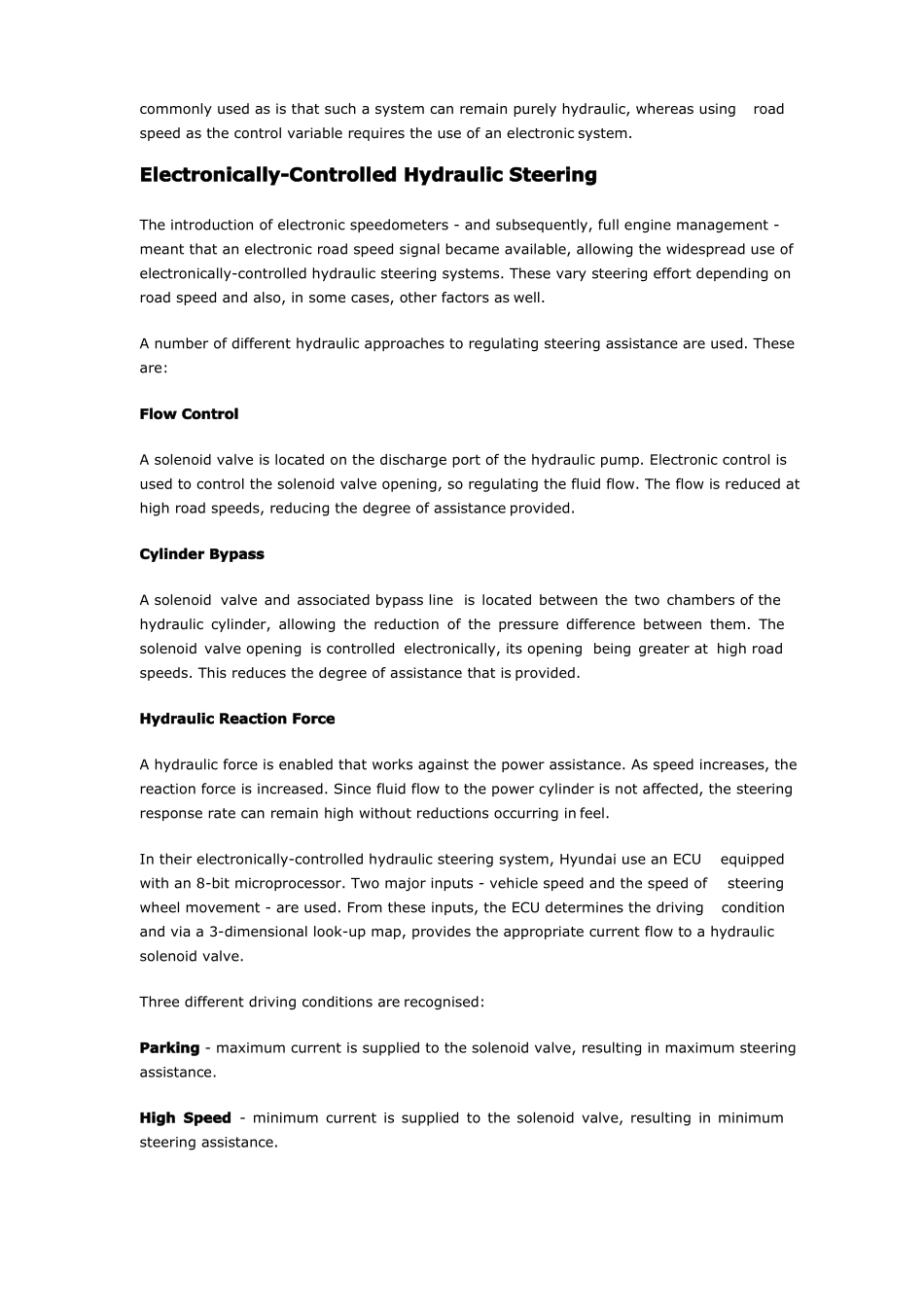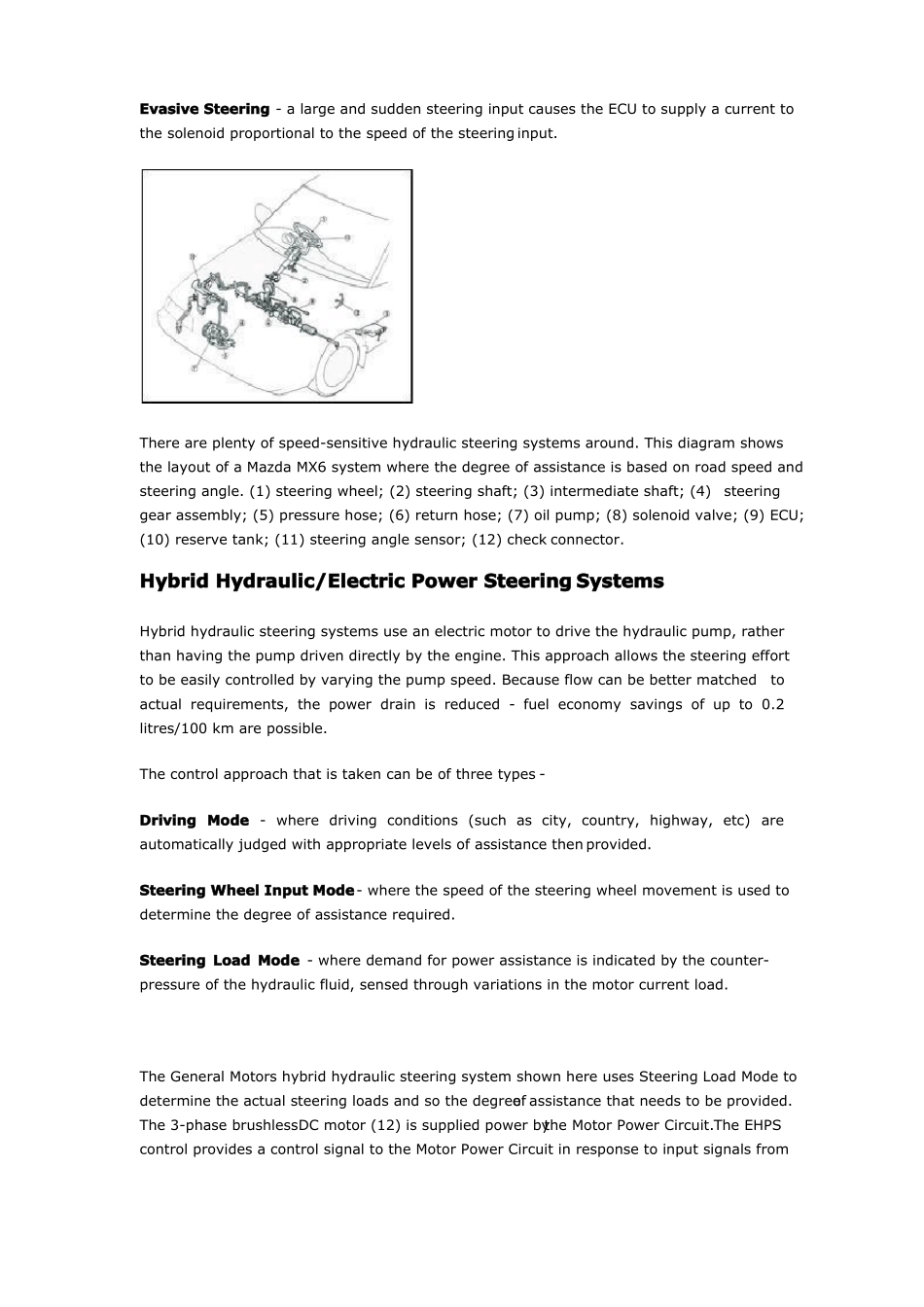中文 3000 单词,2000 单词,1 万英文字符本文来自于 http://autospeed.com/cms/title_Electric-Power-Steering/A_110661/article.htmlThe conventional hydraulically-assisted power steering used in most cars is soon to bereplaced with electric power steering. Already, many manufacturers are using electronicallycontrolled hydraulic systems, while some car manufacturers have recently introduced purelyelectric systems to their vehicles. In addition to reducing engine loads, full electricpowersteering allows steering responsiveness to be automatically varied depending on speed, roadconditions - and even the driver's ability!Traditional Hydraulic Power-Assisted SteeringHydraulic Power Assisted Steering has been used in automotive applications for about50years. The systems use an engine-driven hydraulic pump, a control valve, steering cylinderand connecting hydraulic hoses. The pump is usually of a vane design with an integratedinternal bypass. It is sized so that - even at idle rpm - it delivers enough oil flow to provide asuitable degree of power assistance.The control valve uses a flexible torque-measuring device (such as a torsion bar, spiral springor leaf spring) to convert the steering torque into a small control movement. This movementis transferred to a valve that regulates fluid flow to the power assistance mechanism. In rackand pinion steering, a double-ended hydraulic ram mounted parallel to the rack (within therack assembly) is used, while recirculating ball systems incorporate the mechanism into thesteering box. Note that in the Nissan system shown here, the fluid reservoir is incorporatedinto the pump.A major problem with simple conventional hydraulic steering systems is that the assistancelevel is not reduced at high speeds, giving a...


